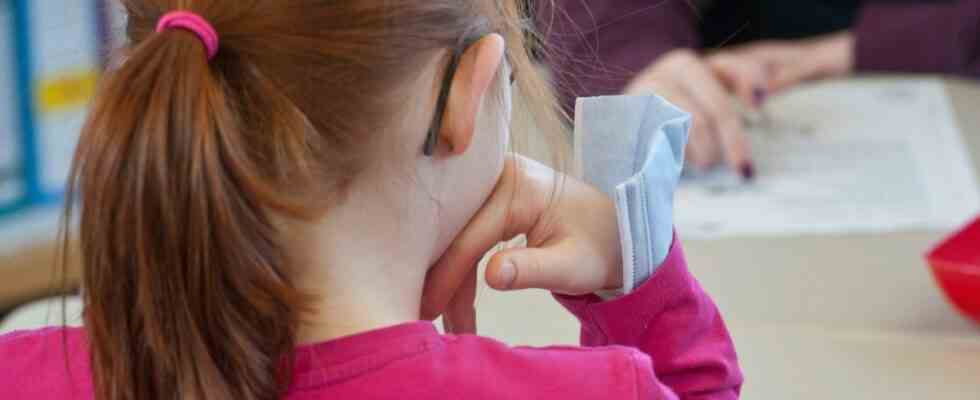The guideline on how school lessons should be carried out in times of a pandemic is in a revised version appeared. It was written by over 20 professional societies and representatives of parents, students, teachers and other affected groups. In the new version, the authors take into account that the risk situation has changed significantly since the first recommendations were drawn up. As before, the recommendations are based on the consensus of those involved, which, in addition to scientific evidence and health aspects, also take into account factors such as acceptance, practicability, financial, ecological and social consequences of the infection control measures. “The main focus of the guideline is the intention to use the recommended measures to maintain attendance in schools and to enable contact behavior there to be as normal as possible,” says co-author Reinhard Berner, Director of the Clinic and Polyclinic for Pediatric and Adolescent Medicine at the TU Dresden. Here are the most important recommendations:
masks
In the event of incidences that threaten to overload the healthcare system or critical infrastructure, the authors recommend that children and young people wear medical masks in class and on school buses. The mouth and nose protection reduces the risk of infection in a bundle with other measures and thus outweighs the disadvantages, they write. The main disadvantage mentioned was the high consumption of resources.
ventilation and air filters
The guideline makes it clear that, in principle, there should be regular and sufficient ventilation if the classroom does not have a ventilation system. CO₂ traffic lights can be considered as an indicator of air quality, it said. Rooms that have no possibility of air exchange should not be used for teaching at all.
The guideline team writes that ventilation in combination with other measures probably contributes to infection protection. Opening the windows is also inexpensive. A disadvantage are acceptance problems with some of the students and teachers.
On the other hand, the guideline now explicitly speaks out against the general use of air filters. “The use of air purifiers should be avoided,” it says. Only in exceptional cases could its use be considered. This included, for example, rooms with skylights where air exchange is inadequate.
The authors write that individual studies have shown that aerosols can be reduced by air filters. However, there was “no reliable knowledge about the cleaning performance required to reliably avoid Sars-CoV-2 infections”. Overall, as with window ventilation, a positive effect on the infection process is likely. However, the authors write that “the far-reaching negative effects” in other areas of the air filters weigh unfavorably: the high costs of purchasing and maintaining the devices, the ecological consumption of resources, the noise and “feasibility problems”, which primarily relate to that the devices had to be professionally installed and maintained.
Testing
The statements on the test strategy are new in the guideline. The authors are relatively reserved here. If other measures such as wearing a mask and keeping your distance do not work, twice-weekly tests could be considered in the case of critical incidences, with PCR tests being preferred. Regular testing and the isolation of infected students and teachers, together with other measures, are associated with a reduction in Sars-CoV-2 transmission, it says. On the other hand, there is a relatively high level of effort and resource consumption.
Dealing with suspected cases
If students have symptoms such as a sore throat, cough or runny nose, they should only return to class if they have been symptom-free for at least a day, the guideline committee advises. A slightly runny or blocked nose alone or an occasional scratchy throat or cough does not necessarily mean that children and young people stay at home. The differentiation is not always easy in individual cases.
Ultimately, this is intended to prevent students from being absent from class too often and too many parents suddenly staying away from work because they are looking after children. The regulations of the responsible health authorities apply to students who are corona positive or contact persons.
reduction of classes
The authors also see the splitting up of classes or cohorts, i.e. the restriction to contacts within defined groups, as measures of second choice. They can be considered when other interventions alone are no longer sufficient. Reduced contact between students helps to protect against infection, but could affect mental health and well-being and possibly lead to the cancellation of face-to-face classes.
physical education and music lessons
According to the guideline, both subjects should also be taught during the pandemic. If possible, sport should be outdoors and in the same groups. If the lessons are moved to the gym, attention should be paid to distance and ventilation as far as possible. If the incidence is critical, physical education should not be taught indoors. In music lessons, singing and playing wind instruments should be avoided if the incidence is very high. In both activities, as well as in sports, a particularly large number of potentially infectious aerosols are emitted.

